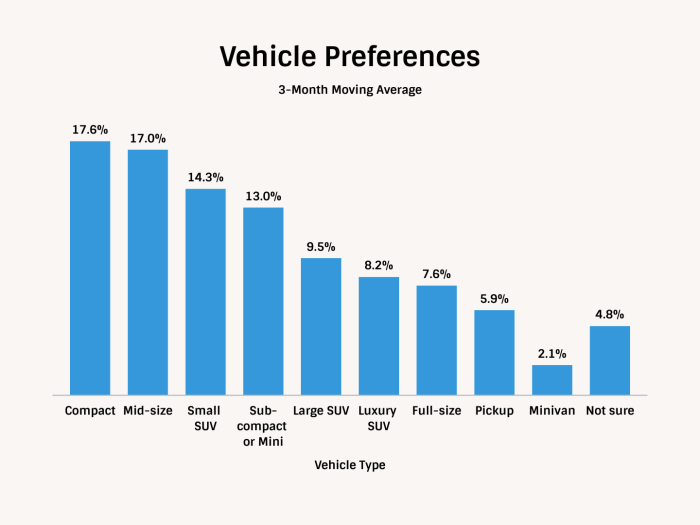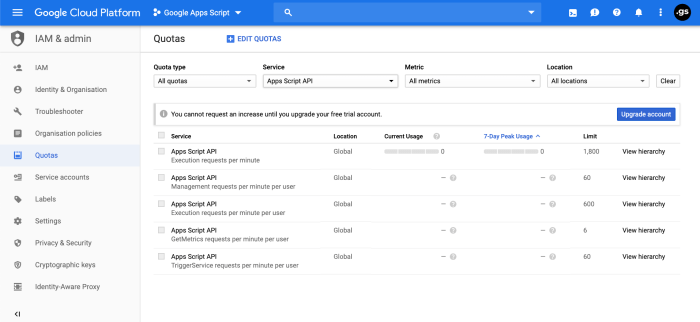Types of Finance Corporations Involved in Real Estate Development

Real estate development is a capital-intensive endeavor, requiring significant funding throughout the project lifecycle. A diverse range of financial institutions plays a crucial role in providing this capital, each with its own investment strategies and risk appetites. Understanding the nuances of these different players is essential for developers seeking to secure financing.
Major Categories of Financial Institutions
Several key categories of financial institutions provide funding for real estate development projects. These include commercial banks, private equity firms, real estate investment trusts (REITs), insurance companies, and pension funds. Each institution brings a unique perspective and approach to investment, shaping the landscape of real estate finance.
Comparison of Investment Strategies
Banks typically provide debt financing, such as construction loans and mortgages, secured by the underlying real estate. Their investment strategy focuses on relatively low-risk, short-term returns with a strong emphasis on collateral. Private equity firms, on the other hand, often invest in equity, taking an ownership stake in the development project. Their strategy prioritizes higher returns but accepts greater risk and typically involves longer-term investments.
REITs invest in income-producing real estate, offering investors a diversified portfolio of properties. Their strategy centers on generating stable cash flows through rent collection and property appreciation.
The Roles of Insurance Companies and Pension Funds
Insurance companies and pension funds are significant players in real estate financing, often seeking long-term, stable investments with predictable returns. They typically invest in larger, well-established projects, providing either debt or equity financing. Their investment strategies are driven by the need to meet long-term obligations to policyholders and beneficiaries, making them relatively conservative investors.
Lending Practices of Traditional Banks and Non-Bank Lenders
Traditional banks generally follow established lending guidelines and regulations, focusing on creditworthiness, loan-to-value ratios, and the overall risk profile of the borrower and the project. Non-bank lenders, such as private equity firms and hedge funds, often have less stringent requirements and can provide financing for projects that might not qualify for traditional bank loans. They may offer higher interest rates to compensate for the increased risk but offer more flexibility in terms of loan structures and terms.
Funding Options Comparison
| Funding Source | Type of Financing | Investment Strategy | Risk Profile |
|---|---|---|---|
| Commercial Banks | Debt (Construction loans, mortgages) | Low-risk, short-term returns, secured lending | Low to Moderate |
| Private Equity Firms | Equity, Mezzanine Debt | High-return, long-term investments, higher risk tolerance | Moderate to High |
| REITs | Equity investments in income-producing properties | Stable cash flows, long-term appreciation | Moderate |
| Insurance Companies & Pension Funds | Debt or Equity | Long-term, stable returns, conservative approach | Low to Moderate |
Financing Mechanisms for Real Estate Development Projects
Securing funding for real estate development projects is a complex process requiring a thorough understanding of various financing mechanisms. The right approach depends heavily on factors like project size, risk profile, developer experience, and market conditions. This section details several key financing methods commonly employed.
Securing a Construction Loan
Construction loans are short-term financing options specifically designed to fund the construction phase of a real estate project. Lenders typically require a detailed project plan, including architectural drawings, cost estimates, and a clear timeline. The loan amount is usually disbursed incrementally as construction progresses, based on milestones achieved and inspections conducted. Before disbursement, lenders often conduct due diligence to assess the borrower’s creditworthiness, the project’s feasibility, and the overall market demand.
A strong pre-leasing or pre-sale strategy can significantly enhance the chances of securing a construction loan, demonstrating the project’s financial viability to the lender. The loan is typically repaid upon project completion, often through refinancing with a permanent loan.
Types of Equity Financing
Equity financing involves raising capital by selling ownership stakes in the project. This can take several forms. One common approach is attracting private investors, either through direct investment or through limited partnerships. These investors contribute capital in exchange for a share of the project’s profits and potential appreciation. Another form is through crowdfunding platforms, which allow developers to raise smaller amounts of capital from a larger pool of investors.
Finally, joint ventures, discussed in more detail below, often involve equity contributions from multiple partners. The choice of equity financing depends on the project’s size, risk tolerance, and the developer’s network.
Mezzanine Financing in High-Risk Ventures
Mezzanine financing sits between debt and equity financing. It typically involves a subordinated loan with higher interest rates than traditional loans but lower than equity returns. This type of financing is often used in high-risk development ventures where traditional lenders are hesitant to provide full funding. Mezzanine financing provides additional capital to bridge the gap between equity and debt, allowing developers to pursue more ambitious projects.
For example, a developer might secure a construction loan for 70% of the project cost and then use mezzanine financing for the remaining 15%, with the remaining 15% coming from equity. The mezzanine lender often receives warrants or equity options as an incentive, providing them with upside potential in case the project is highly successful.
Joint Venture Financing for Large-Scale Projects
Joint ventures are partnerships between two or more entities to undertake a large-scale real estate development project. Each partner contributes resources, expertise, and capital, sharing in the profits and losses proportionally. This structure can be particularly beneficial for projects requiring significant capital investment or specialized skills. For example, a large-scale mixed-use development might involve a partnership between a land owner, a construction company, and an investment firm, each contributing their specific expertise and capital to the project.
The financing structure within a joint venture can be complex, often involving a combination of debt and equity financing from each partner and external lenders. The agreement clearly Artikels each partner’s responsibilities, financial contributions, and profit-sharing arrangements.
Key Documents in Securing Real Estate Development Financing
Securing financing for real estate development projects involves submitting a comprehensive package of documents. These typically include a detailed business plan outlining the project’s scope, market analysis, financial projections, and risk assessment; a feasibility study demonstrating the project’s viability; architectural plans and specifications; environmental impact assessments; market studies confirming the demand for the project; legal documents such as title insurance and surveys; and, crucially, the borrower’s financial statements and credit history.
The specific documents required can vary depending on the lender and the project’s complexity, but a thorough and well-prepared application significantly improves the chances of securing financing.
Case Studies of Successful and Unsuccessful Projects

This section presents two detailed case studies illustrating the contrasting outcomes of real estate development projects. One showcases a successful undertaking, highlighting effective financing strategies and contributing factors, while the other analyzes a failed project, examining its shortcomings and lessons learned. Analyzing these contrasting examples provides valuable insights into the complexities of real estate finance and development.
Successful Project: The Hudson Yards Redevelopment
The Hudson Yards development in New York City serves as a prime example of a successful large-scale real estate project. This ambitious undertaking transformed a previously underutilized section of Manhattan’s west side into a vibrant mixed-use district encompassing residential towers, commercial spaces, public parks, and cultural institutions. The project’s success can be attributed to a multifaceted approach encompassing strategic planning, innovative financing, and effective risk management.The financing strategy for Hudson Yards involved a complex blend of public and private funding sources.
The city of New York provided significant infrastructure support, including the extension of the subway line, while private equity firms and institutional investors contributed billions of dollars in equity and debt financing. This layered approach mitigated risk and allowed for the project’s massive scale. The project leveraged tax increment financing (TIF), where increased tax revenues generated by the development were used to repay the bonds issued for infrastructure improvements.
This reduced the upfront financial burden and attracted private investors.Factors contributing to the project’s success include its prime location, strong demand for both residential and commercial space in Manhattan, and the effective management of construction and development timelines. The project’s developers successfully navigated complex regulatory hurdles and managed stakeholder expectations effectively.Financial Performance: While precise figures are not publicly available in their entirety, Hudson Yards’ success is evident in the high occupancy rates of its residential and commercial spaces, strong rental income, and substantial property value appreciation.
The return on investment (ROI) for the various investors involved is likely substantial, although specific figures are confidential. Key financial ratios, such as the debt-to-equity ratio and the net operating income (NOI) margin, would likely reflect a financially sound and profitable venture.
Unsuccessful Project: The Ryans Townhomes Development
In contrast, the Ryans Townhomes development, a smaller-scale project in a suburban area, exemplifies a failed real estate venture. This project, aiming to build a cluster of townhomes, faced several challenges that ultimately led to its collapse. The primary issues stemmed from poor market analysis, inadequate financing, and unforeseen construction delays.The financing strategy relied heavily on short-term construction loans with high-interest rates.
The developers lacked sufficient equity and failed to secure long-term financing options, leaving them vulnerable to interest rate fluctuations and market downturns. The lack of contingency planning for potential cost overruns and delays exacerbated the financial strain.Factors contributing to the project’s failure included an overestimation of market demand, leading to unsold units, and unexpected increases in construction costs due to material shortages and labor issues.
Poor project management, leading to significant construction delays, further depleted available funds. The project also faced challenges securing necessary permits and approvals in a timely manner.Financial Performance: The Ryans Townhomes project experienced significant financial losses. The return on investment was negative, with the developers ultimately losing their initial investment and incurring substantial debt. Key financial ratios, such as the debt-to-equity ratio and the leverage ratio, would have been highly unfavorable, indicating a precarious financial position.
Lessons Learned
The following points summarize the key lessons learned from both case studies:
- Thorough Market Analysis: A comprehensive understanding of market demand, competition, and potential risks is crucial for success.
- Secure Diverse Funding: Relying on a single funding source is risky. Diversifying funding sources and securing long-term financing options is essential.
- Effective Risk Management: Developing a robust risk management plan that anticipates and mitigates potential challenges is vital.
- Competent Project Management: Efficient project management, including meticulous planning and execution, is crucial for staying on schedule and within budget.
- Realistic Financial Projections: Financial projections should be conservative and account for potential cost overruns and delays.



